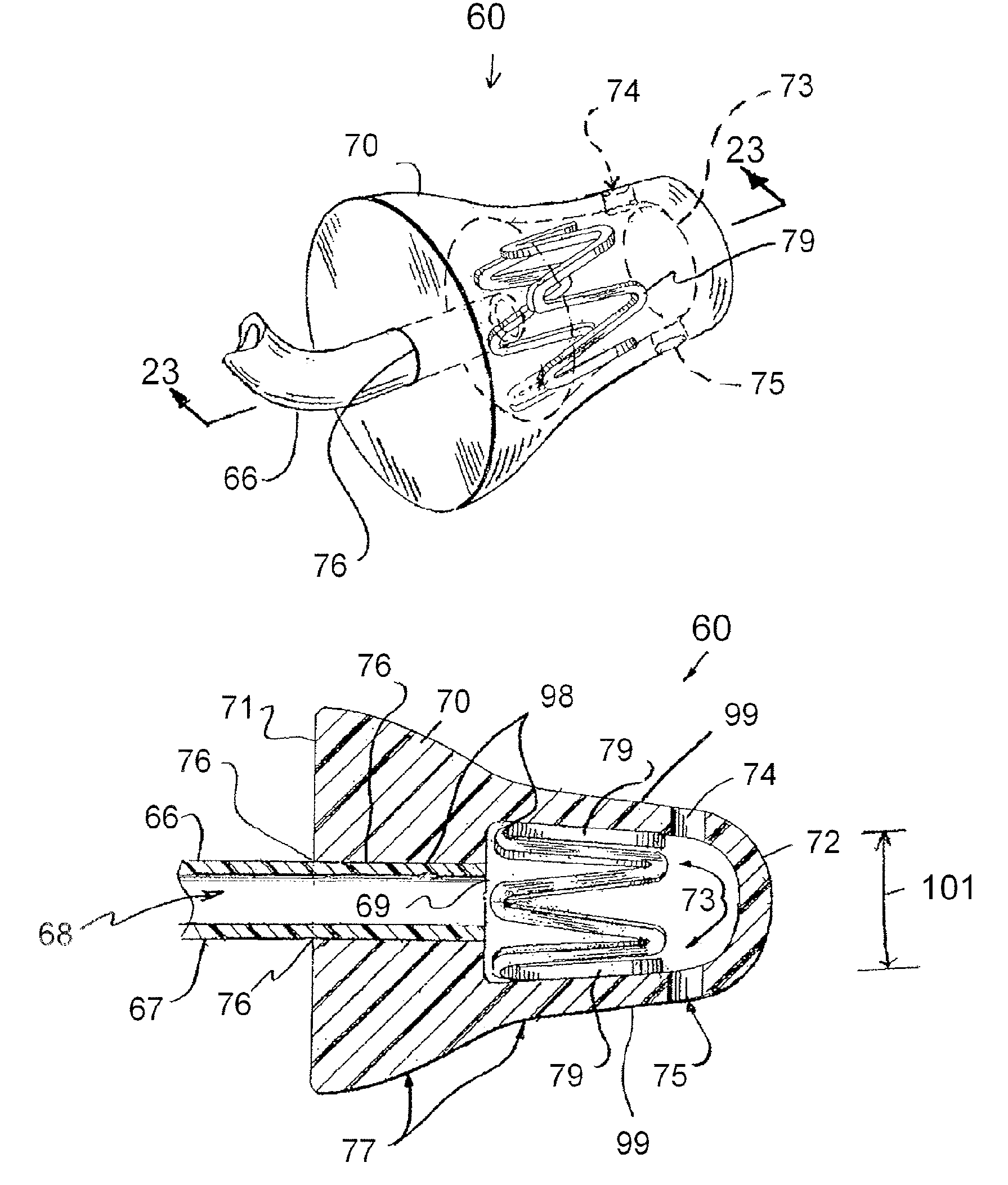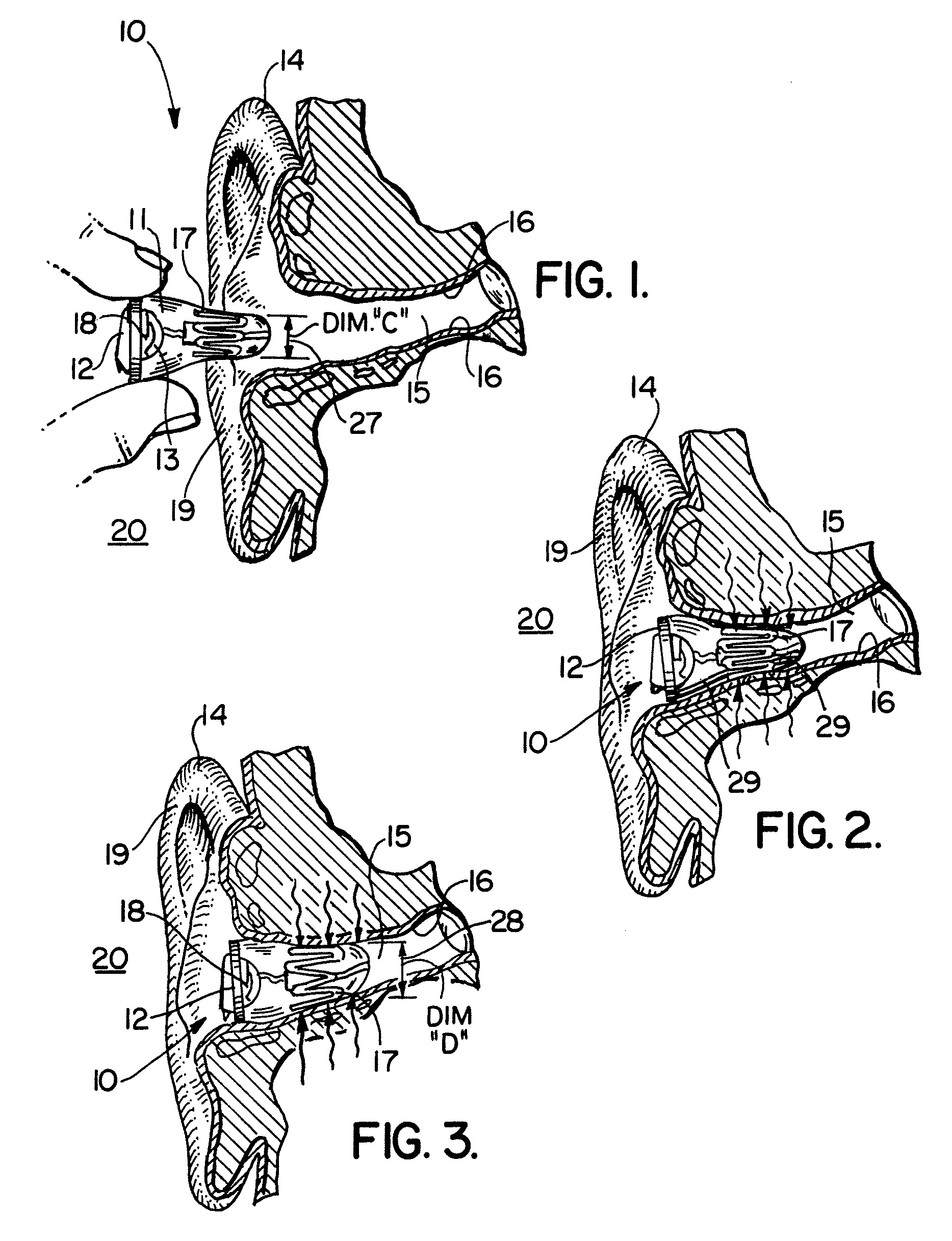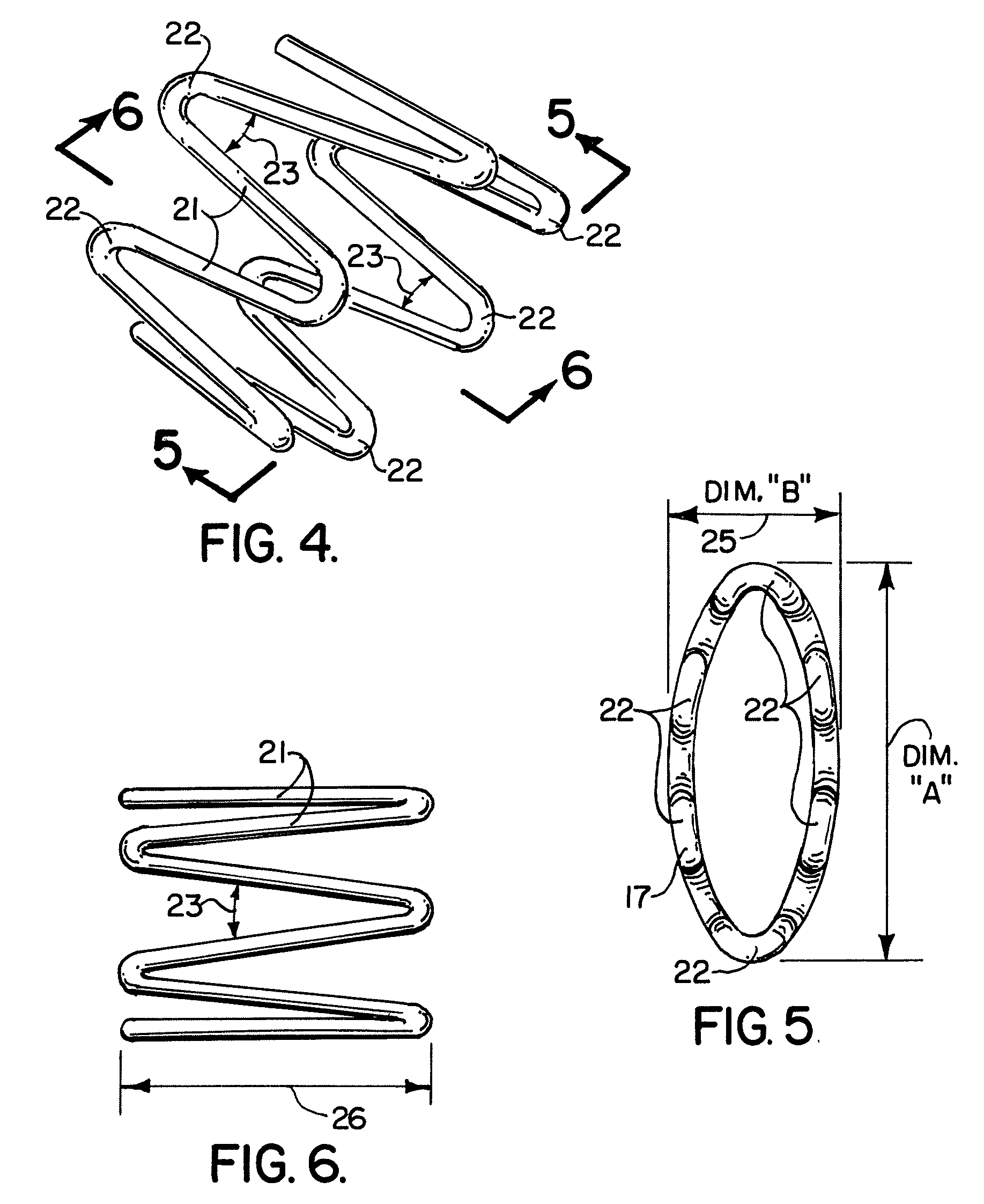Self forming in-the-ear hearing aid with conical stent
a conical stent and hearing aid technology, applied in the field of hearing aids, can solve the problems of not having alternatives, outgrown too quickly to be cost effective, etc., and achieve the effect of extending the proper fit of the device, cost saving, and enhancing the fitting
- Summary
- Abstract
- Description
- Claims
- Application Information
AI Technical Summary
Benefits of technology
Problems solved by technology
Method used
Image
Examples
third embodiment
[0115]the apparatus of the present invention is shown in FIGS. 26-27, designated generally by the numeral 80. Hearing aid apparatus 80 provides an insert or plug 81 having a first end portion 82 and a second end portion 83. The second end portion 83 is positioned closest to a user's ear drum 97 when the insert or plug 81 is placed in the ear canal 63. Insert or plug 81 provides a cavity 84. A stent 79 is placed in cavity 84. Sound port openings 85, 86 communicate between the tapered outer surface 89 of insert or plug 81 and cavity 84. A third sound port opening such as 113 in FIG. 33 could be provided. Ear wax filter 114 could be provided between cavity 84 and any sound port opening 85, 86, 113 as shown in FIG. 33.
[0116]Socket 87 can be generally cylindrically shaped. The socket 87 extends between first end 82 of plug or insert 81 and cavity 84 as shown in FIG. 27. Socket 87 is receptive of speaker 88. The speaker 88 can be a commercially known speaker that is joined with wire cable...
fifth embodiment
[0119]FIG. 32 shows the apparatus of the present invention that employs an optional vent tube 112. In FIG. 32, vent tube 112 extends between cavity 73 and first end 71 as shown. In all other respects, the embodiment of FIGS. 32-33 can be the same as the preferred embodiment of FIGS. 22-25.
[0120]FIGS. 34-36 show yet another embodiment of the apparatus of the present invention, designated generally by the numeral 102. Hearing aid apparatus 102 provides an insert or plug 103 having first end 104 and second end 105. The insert 103 provides a cavity 106 next to the second end 105 as shown in FIG. 33. A pair of sound port openings 107, 108 communicate sound between cavity 106 and the area outside of plug 103.
[0121]Socket 109 can be generally cylindrically shaped and is receptive of tubing 66. An interference fit can be used for example to attach tube 66 to socket 109. Alternatively, tube 66 can be attached to insert or plug 103 at socket 109 using adhesive or other means known in the art ...
PUM
 Login to View More
Login to View More Abstract
Description
Claims
Application Information
 Login to View More
Login to View More - R&D
- Intellectual Property
- Life Sciences
- Materials
- Tech Scout
- Unparalleled Data Quality
- Higher Quality Content
- 60% Fewer Hallucinations
Browse by: Latest US Patents, China's latest patents, Technical Efficacy Thesaurus, Application Domain, Technology Topic, Popular Technical Reports.
© 2025 PatSnap. All rights reserved.Legal|Privacy policy|Modern Slavery Act Transparency Statement|Sitemap|About US| Contact US: help@patsnap.com



